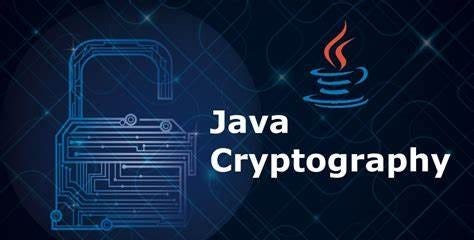Cryptography is a cornerstone of digital security, often standing as a bulwark against the myriad threats posed in a hyper-connected world. As businesses and individuals increasingly rely on information technology, the choice of programming language for implementing cryptographic systems warrants scrutiny. Java, with its extensive footprint in enterprise solutions and a robust ecosystem, prompts an inquiry: Is it secure enough for cryptographic endeavors? This exposition delves into the myriad pros and cons of employing Java for cryptographic tasks.
To begin dissecting the subject, it’s crucial to recognize that Java has gained a commendable reputation within software development, endorsed by its platform independence and a strong community backing. These attributes inherently form the bedrock of its suitability for cryptographic applications. Java’s robust memory management and garbage collection mechanisms alleviate concerns surrounding memory leaks, which can be particularly pernicious in cryptographic code. A misplaced pointer or an unchecked buffer overflow can facilitate vulnerabilities. By abstracting such concerns, Java mitigates some of the risks situationally inherent in lower-level languages.
Furthermore, Java’s extensive standard library includes a formidable suite of cryptographic classes, part of the Java Cryptography Architecture (JCA) and Java Cryptography Extension (JCE). These libraries are not merely superficial offerings; they feature established algorithms for encryption, hashing, and digital signatures. By leveraging these libraries, developers can avoid reinventing the wheel and can implement proven techniques, thus reducing the chance of introducing undetected flaws in custom code. This integration enables rapid development of secure applications that adhere to recognized standards, fostering not just security but also efficiency in coding efforts.
However, venturing too far into the realm of convenience can engender complacency. The question arises: are these libraries entirely devoid of vulnerabilities? A disconcerting fact is that vulnerabilities have surfaced over the years within Java’s ecosystem. Various security exploits have been documented, raising alarm bells and necessitating timely updates and patches. If Java applications do not remain current, they risk being susceptible to known flaws. Thus, security-conscious developers must diligently monitor updates and employ proactive measures to safeguard their applications.
Moreover, the issue of performance cannot be overlooked. While Java is relatively efficient, it may not match the raw speed of languages such as C or Rust when it comes to cryptographic computations. This performance gap is consequential, particularly in high-frequency trading platforms or systems requiring real-time data processing. The optimization of cryptographic implementations often requires finely-tuned, processor-specific execution paths. In scenarios where performance is as critical as security, the question looms large: is the trade-off justifiable?
Java’s security architecture also prompts scrutiny amidst claims of robustness. The language employs a security manager and a security policy, allowing fine-grained control over what resources classes can access. While this is commendable, it introduces a layer of complexity that can baffle novice developers or lead to misconfigurations. Improperly set permissions can establish narrow pathways for exploitation, potentially negating the very protections that Java attempts to enforce. As the aphorism goes, the road to vulnerability is often paved with good intentions.
Notably, adherence to the Java Secure Coding Guidelines is paramount in navigating these minefields. These guidelines purport to thwart common pitfalls—such as avoiding the use of insecure API formats, managing sensitive data with care, and instituting comprehensive input validation checks. Emphasizing the importance of security throughout the development lifecycle ensures that the cryptographic applications developed in Java are not just functionally sound, but resilient against malfeasance.
The realm of cryptography is ever-evolving, prompting an essential inquiry into the proactive measures Java developers must adopt. Incorporating innovative techniques like code reviews, threat modeling, and penetration testing can significantly bolster the resilience of a Java-based cryptographic system. These methodologies provide frameworks for identifying potential vulnerabilities before they can be exploited in the wild. Auditory approaches, third-party assessments, and automated testing tools can furnish developers with insight into their applications’ integrity.
Another elemental dilemma pertains to the community and ecosystem that Java encapsulates. Given the prevalence of Java within educational institutions and corporate training programs, a substantial pool of developers emerges. These developers often share insights, code snippets, and libraries that can enhance cryptographic efforts. However, this broad spectrum of contributions also means varying levels of expertise. Consequently, employing open-source libraries without thorough vetting may yield vulnerabilities, as one cannot ascertain the level of scrutiny that a community offers a given resource.
In summation, the question “Is Java safe for cryptography?” does not yield a black-and-white answer. The advantages, including robust libraries, community support, and extensive tooling, position Java as a credible candidate for cryptographic endeavors. Nevertheless, concerns surrounding vulnerabilities, performance implications, and the need for diligent adherence to best practices must remain rooted in the psyche of every developer. Ultimately, curiosity about Java’s merits in cryptography should encourage developers to critically evaluate its usage context, ensuring that security remains paramount. The ongoing exploration of its capabilities—and limitations—offers an intriguing vista for future cryptographic yields.









Leave a Comment